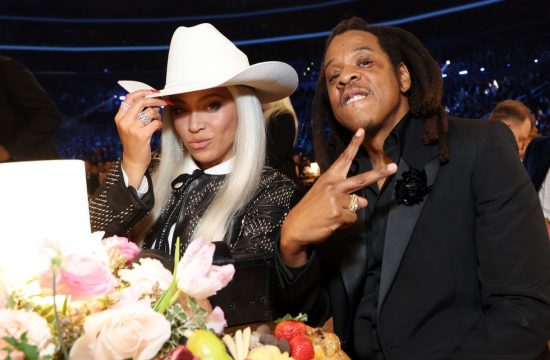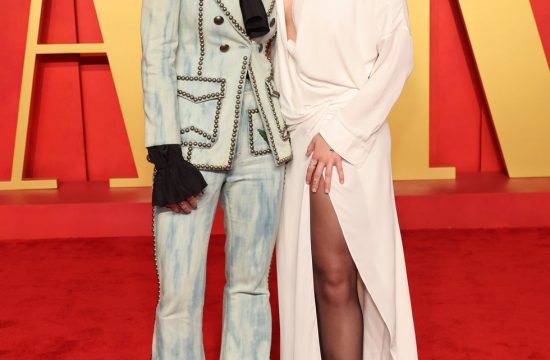Y’all, all of the sudden, gingham is EVERYWHERE. Have you noticed that? I first noticed the “Gingham Takeover” in an Eloquii ad with Reese Witherspoon’s brand, Draper James.
The one place I *do* read the comments is on ads for new plus size brands, because I think it’s fascinating to see what people have to say. I was curious to see if folks were fans of the gingham, so I started reading the 100+ comments.
And, boy oh boy, the comments were ON FIRE. Plus size customers were asking valid questions like, “Why did it take Witherspoon so freaking long to add plus? Why should I support them now?”

This isn’t new. As brands have (slowly) expanded their size ranges, or added an entirely new plus division, plus size customers have gotten ticked.
And, honestly, looking at the Draper James and Eloquii collaboration – how are brands supposed to expand their sizing? I thought it made sense that Draper James partnered with a company like Eloquii, because Eloquii understands the plus customer and has the resources/staff to pattern and manufacture plus clothing.
While I’m not a fan that it took Draper James so long to be inclusive, this collaboration seemed like a smart move to me.
HOWEVER, Inclusion can be messy.
We ask brands: “Why did it take so long for you to include us?”
This strong tension exists, where we want to be excited about a brand’s new size offering, but we also wonder in the back of our heads, “Ah, they realized the fats have money. Took them long enough.”
And while I totally understand and share in this frustration, it presents a larger problem. Brands are damned if they do add plus and damned if they don’t. From my standpoint, we’re upset that brands refuse to include us and then set fire to the rain when a brand DOES finally expand its size range. This lose-lose situation can lead to a brand copping out and refusing to enter the plus market at all.
But! There are solutions.
Below, I’ve shared a few ideas for how we, the plus size consumer, can work with plus size brands, and how brands can work with plus customers.
For Plus Babes

Folks: Do we want inclusive brands, or do we want to stay mad because a brand was slow to add plus?
I think we can have both. I think we can celebrate brands getting on the “Plus Train”, but also critically examine and call brands out for taking so long.
So, how do we do that?
1. Share Recordable Critique:
I’m a big fan of rants on my personal Facebook, but that doesn’t help a brand change.
Share public and recordable critique and feedback. In the past, when I handled PR and comms for large brands, I would literally screenshot tweets, Facebook, and Instagram comments to show leadership that we needed to step up.
It’s impossible to do this if people aren’t sharing their opinions. Take to Twitter! Tag brands. Call brands out for deleting your comments. Be engaged.
At the same time, share your POSITIVE feelings about a brand. “Give loud, specific feedback to the brand that you are buying it because you are seeing it on a more relate-able and/or less represented body,” says Kate McHugh.
2. Make a Critique Sandwich:
When sharing excitement or dismay over a brand’s decision to catch up with shoppers in 2018, we can be positive and critical. The “Critique Sandwich” is a metaphor. Think of a peanut butter sandwich. The two pieces of bread are positive feedback, and the peanut butter is negative.
Tweet example: “Wow @KateSpadeNY! So excited to see Chrissy Metz in Kate Spade! When can plus customers expect to shop your brand in-store? Excited for this!!”
Remember, there is a person who has to read your tweets, so unless a brand really messes up, the critique sandwich is a good go-to.

3. Vote with Your Money:
Let’s be real, brands are expanding their lines because retail is changing. Brick and mortars are dying out, and plus customers represent a way to boost sales.
Welcome to Capitalism.
If you don’t agree with what a brand is doing, stop buying their stuff — and TELL the brand, somewhere, why you are not buying. Remember how I talked about how I would screenshot feedback to try to get my employer or client to #GetWithTheTimes?
I’d also use tweets like this to show the company was losing $$$$ over poor design and communcation choices.
4. Accept Apologies.
At a certain point, we have to stop beating a dead horse. If a brand apologizes and shares concrete steps that they will take to do better, let’s accept their apology.
These brands are entering a new market, especially one that has been bullied and left out by much of fashion. Naturally, there will be missteps, areas for improvement, and ways they can improve.
Finally, realize that there are forces at play here beyond size phobia. Smaller brands, like CHROMAT, have wanted to expand to plus for YEARS – but didn’t have the wholesale orders to make it financially feasible.
Before taking to twitter, spend a few minutes on Google to read what comments a brand has (or hasn’t) shared on expanding to plus.
For Brands

Launching a new endeavor can always be tricky… and can present a communications NIGHTMARE for brands, because they think they’re going to show up with a new size offering and be joyfully greeted by grateful customers.
And we’re sometimes waiting with pitchforks.
So, how should a brand expand to plus? Here’s a handy dandy plan:
1. Nothing About Us Without Us.
In order to engage with the plus community, you absolutely need plus size people on your staff. While a thin or straight sized person can be great at the communication strategy, they’re likely not going to understand the underlying community issues and history of the plus size customer. (Thanks to Kristi Siedow-Thompson for telling me about this phrase!)
Do yourself a favor, and hire influencers of different opinions (who aren’t afraid to disagree with you), to discuss the pros and cons of different campaign approaches. This will only work if they’re willing to tell you that you are messing up.
Create a feedback mechanism for influencers/bloggers who ARE the face of marketing campaigns to leave notes on negative feedback they’re finding.
From plus model Sabrina Servance:
“I wish that they would talk to us and get our feedback/suggestions. A lot of times a brand will brag about their offerings. But after scrolling through what feels like 20 pages of straight sizes, it’s only a few tops, or a few bottoms.
That is NOT expanding your range to include plus size clothing. Sure it increases visibility and interest. But in the long wrong it does nothing to keep us shopping your brand or even looking at your brand. “
2. Embrace Critique.
When engaging for the first time with the plus community, plus size brands have to acknowledge and realize that they have engaged a customer base comprised of activists. Plus customers are active and vocal customers.
Be prepared for critique and some righteous frustration. Remember that anyone engaging with you likely likes your products and they are potential customers.

Before you launch a new hashtag campaign, jump on the body positivity bandwagon, or launch your newest campaign, understand that each one of those moves (within the plus size community and industry) will have its own sets of nuances.
Fact of the matter is, if you messed up, own it, take note, and make the steps to not replicate it again…
The plus community has increased our options by being vocal and critical of brands, creating a critical mass of critique to spur brands into action. More importantly, the plus size fashion industry moves the complete opposite of mainstream fashion (from the bottom up, versus top down.)
It is because of the activism and social media that tour industry has grown. We birthed our own brands, our own media, and our own plus size influencers.
Being loud got us more options. (To see a brand that’s poorly engaging with customer feedback, read this piece on Universal Standard.)
3. Understand the Climate
While it is great to have you here, understand that the chances of you being the first or best is slim. Understand those that were here before you and who have made inroads for you to be where you are.
Acknowledge those within the industry and community who are change and thought leaders, who have impacted and affected change.
Yes, we are happy you are here, but we’re not handing out gold stars for being slow to make the wise business decision to add plus. A brand entering the plus market needs to be able to do so with an awareness of the temperature of the industry.
We have our own media, platforms, and have used these to impact change. Do your research, hire consultants, and stay humble in your launch.

Note: The brand Reformation tried this, but partnered with a model who is quoted as saying, “I don’t care about the people’s health who are fat.” Sarah Conley wrote more about the launch here, which is a must read for any brand expanding to plus.
Questions to Answer:
-
- Why are you expanding to plus sizes, NOW, when we’re 67% of the population?
- What systems or plans are you putting into place to continue broadening your size range? Having people sign up for a focus group? How will you organize and take into account criticism, feedback, and decide what’s valid and what isn’t, and how will you use that information to move forward?
- What systems or procedures to collect feedback are you planning on using.
- For whatever reason, whether it’s talent sourcing for design, manufacturing, etc, the fact remains that YOU (speaking to brands here) took a second to dip your toe into the plus size market. You’ve seen the business value, the ROI of having plus customers, but why should we support you when you’re late to the game? What are you going to differently, how are you going to be inclusive?
4. Are you REALLY being inclusive?
Some brands, like White House Black Market, expanded to plus – but didn’t include the size offering in store. This is a huge misstep. If you’re going to expand your offering, it must be an equal offering. No more shoving plus sizes in a dimly lit back corner, or only making plus available online.
It’s insulting to see a brand self-congratulate for inclusiveness, when we’re constantly treated like the ugly stepsister.
4b. Inclusivity Includes Model Size Diversity
From body positive and plus luxury fashion blogger Suma Jane Dark:
“Brands should not underestimate the plus community’s commitment to seeing bodies that actually represent us in their advertising.
They won’t get any kudos and will probably be dragged if they do a big press push about their newfound inclusivity and all of the promotional photos are straight sized models or models who are on the smallest end of the plus spectrum.
They can’t sell to us and shame fat bodies simultaneously, which is exactly what it feels like when a plus size brand wants all the congratulations and PR for making clothes for fat people, but doesn’t want us visibly associated with them.”
For Everyone

Fashion is a form of communication. We lose out when either group refuses to communicate, own past actions, acknowledge each other and move forward.
So tell us, who do you think is doing it right? Who is giving plus size fashion a fair deal? Who do you wish did more?
We recognize that as the plus size fashion industry grows in both attention, recognition, and with players, we all have a ways to go.
As The Curvy Fashionista editors, we write about stuff we love and we think you’ll like too. The Curvy Fashionista often has affiliate partnerships, so we may get a share of the revenue from your purchase.












